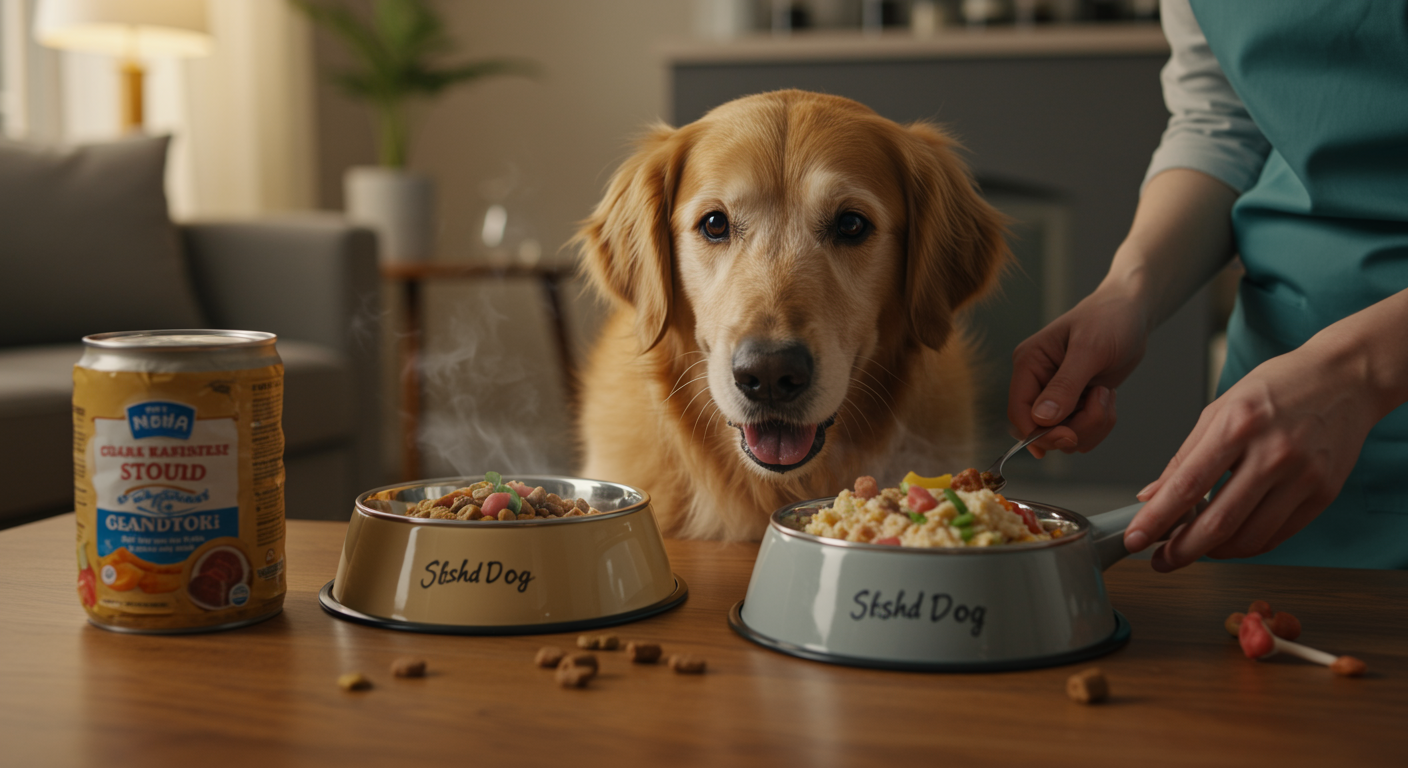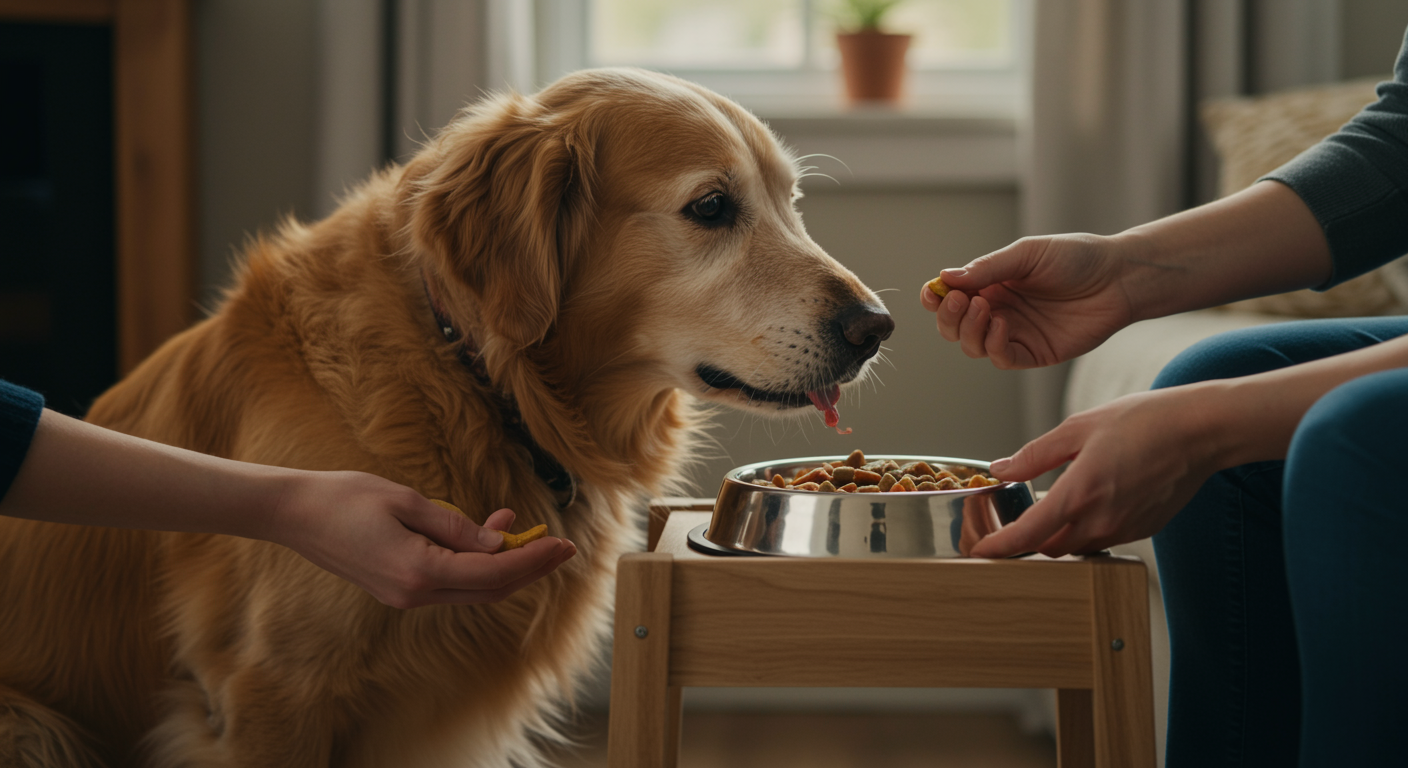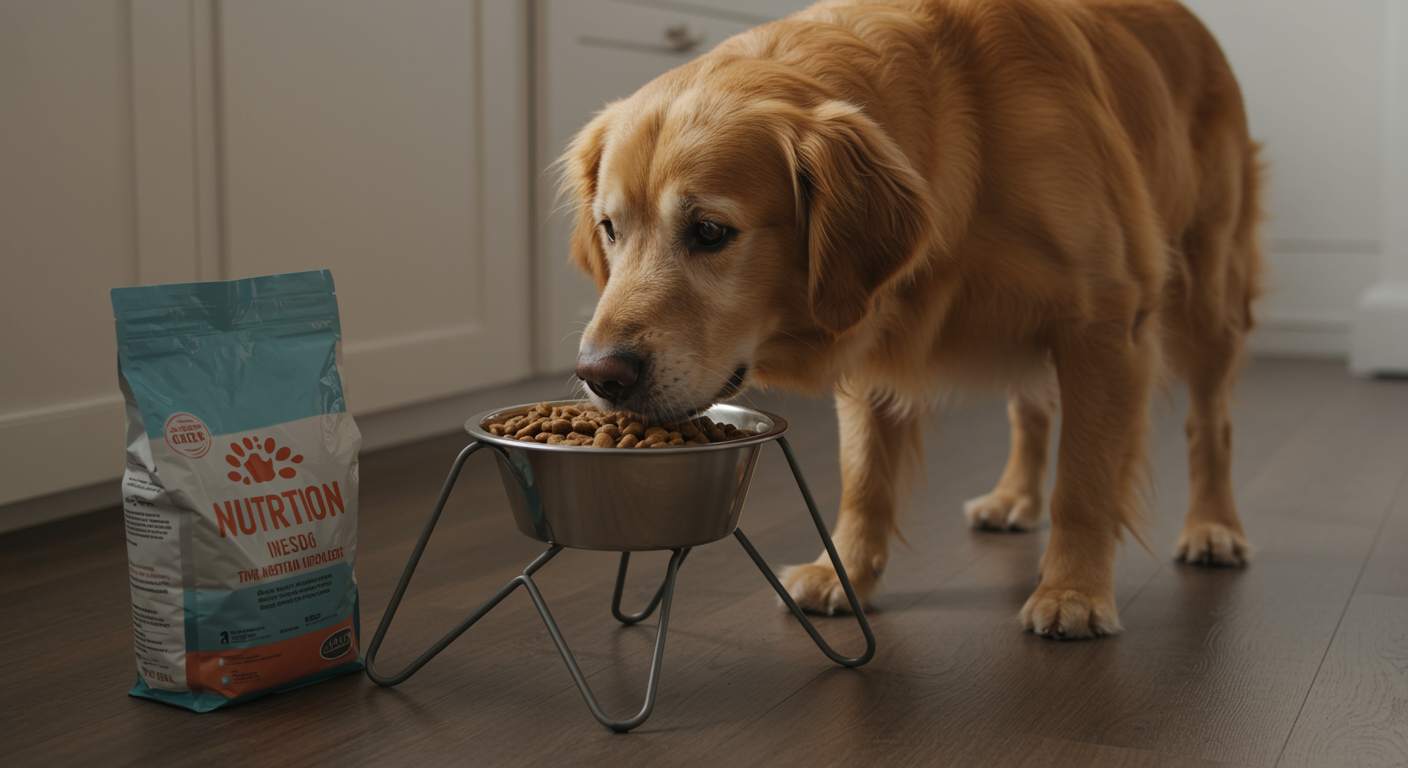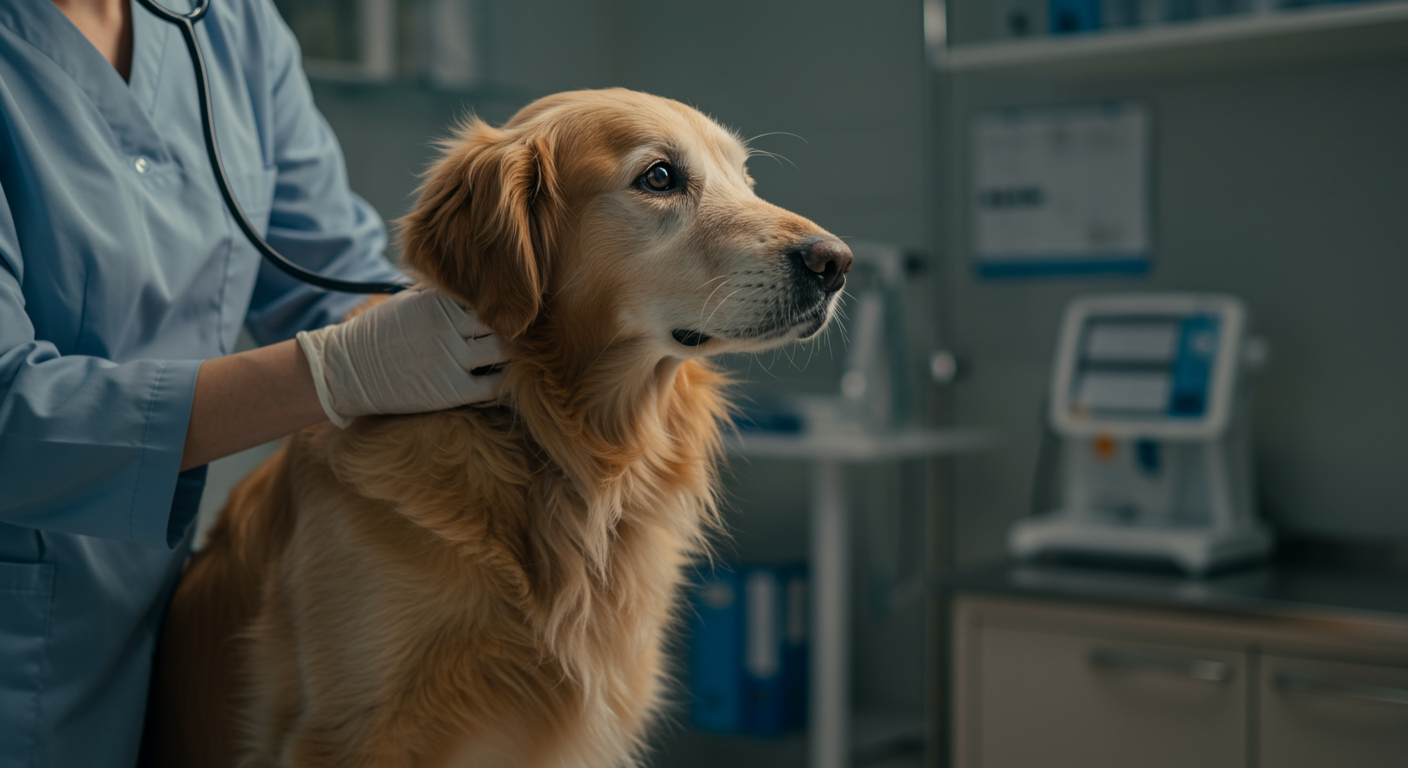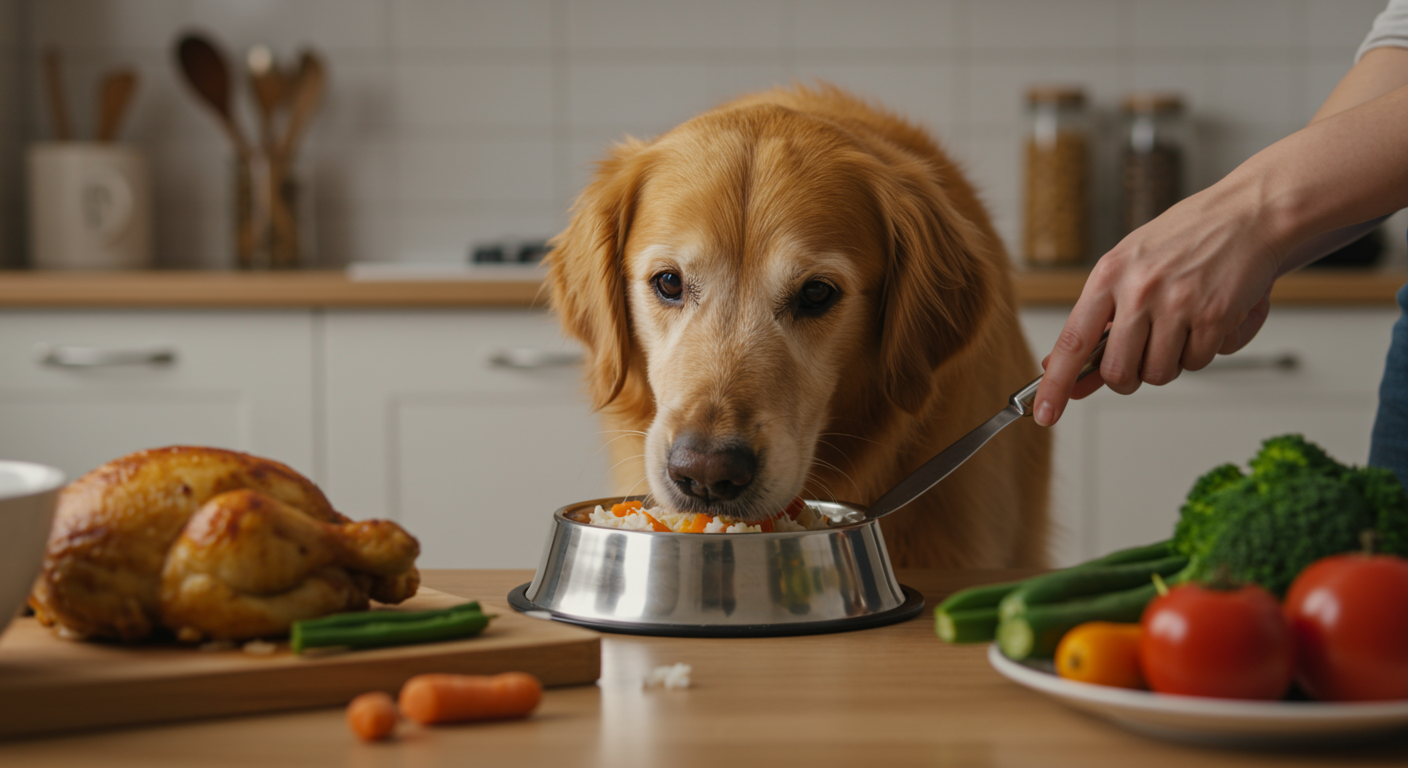Mealtime represents one of the most important and enjoyable aspects of daily life for Golden Retrievers, but creating appealing meal experiences becomes increasingly challenging as dogs enter their senior years. Age-related changes in taste, smell, dental health, and appetite can transform previously enthusiastic eaters into reluctant diners, requiring creative approaches to maintain nutrition and dining pleasure.
Senior Golden Retrievers may experience decreased appetite due to various factors including reduced sense of smell, dental discomfort, digestive changes, or medication effects. Understanding these challenges and implementing strategies to enhance mealtime appeal can significantly improve nutrition intake while preserving one of life’s simple pleasures.
Creating appetizing meal experiences goes beyond simply providing nutritious food; it encompasses presentation, timing, environment, and emotional associations that make eating enjoyable and satisfying for aging dogs. Through thoughtful attention to these factors, families can help ensure their senior Golden Retrievers continue to look forward to and enjoy their meals.
Understanding Senior Appetite Changes
Physiological Factors Affecting Food Appeal
Sensory Changes and Food Perception
Senior Golden Retrievers commonly experience decreased sense of smell, which significantly impacts food appeal since dogs rely heavily on scent to stimulate appetite and identify appealing foods. This reduction in olfactory function can make previously favorite foods seem less interesting or appealing.
Taste bud sensitivity may also diminish with age, affecting the dog’s ability to detect subtle flavors and potentially reducing interest in foods that were once highly palatable. These sensory changes require adjustments in food selection and preparation to maintain appeal.
Vision changes that sometimes accompany aging can affect how dogs perceive and approach their food, making food presentation and bowl placement important factors in creating positive mealtime experiences.
Dental Health Impact on Eating Enjoyment
Dental issues common in senior dogs, including tooth loss, gum disease, or oral pain, can significantly impact eating comfort and food preferences. Hard kibble that was previously enjoyed may become difficult or painful to chew.
Changes in jaw strength and chewing ability may require modifications in food texture and size to maintain eating comfort and prevent mealtime stress or avoidance behaviors.
Understanding the connection between oral comfort and eating enjoyment helps guide food selection and preparation methods that support continued dining pleasure despite dental challenges.
Digestive Changes and Food Tolerance
Gastrointestinal Sensitivity
Senior Golden Retrievers may develop increased sensitivity to certain foods or ingredients that were previously well-tolerated, requiring careful attention to ingredient selection and potential dietary modifications.
Digestive efficiency often decreases with age, affecting how well nutrients are absorbed and potentially influencing appetite and food preferences as the body signals different nutritional needs.
Understanding these digestive changes helps explain why senior dogs may show preferences for different foods or eating patterns compared to their younger years, guiding appropriate adaptations in meal planning.
Food Selection and Preparation Strategies
Enhancing Natural Food Appeal
Aroma Enhancement Techniques
Warming food slightly can significantly enhance its aroma, making it more appealing to senior dogs with diminished sense of smell. This simple technique can transform ordinary meals into more enticing dining experiences.
Adding small amounts of warm, low-sodium broth or bone broth can enhance both aroma and flavor while providing additional moisture that many senior dogs find appealing and beneficial for hydration.
Fresh ingredients such as small amounts of cooked chicken, fish, or vegetables can provide natural aroma enhancement while adding nutritional variety and sensory interest to meals.
Texture Modifications for Comfort
Softening dry kibble with warm water or broth creates a more comfortable eating experience for dogs with dental sensitivity while enhancing aroma and making food easier to digest.
Mixing wet and dry foods can provide textural variety that appeals to different preferences while combining the benefits of both food types for optimal nutrition and palatability.
Pureed or finely chopped additions can provide flavor enhancement without requiring difficult chewing, making meals more accessible for dogs with significant dental limitations.
Creative Food Presentation
Visual Appeal and Presentation
While dogs primarily rely on scent and taste, visual presentation can contribute to positive mealtime experiences by creating appealing arrangements that signal special attention and care.
Using different bowl shapes, colors, or materials can provide variety and interest while potentially addressing practical concerns such as easier access for dogs with vision or mobility changes.
Scattered feeding or puzzle bowl arrangements can add mental stimulation to mealtime while slowing eating pace for better digestion and extended enjoyment of the feeding experience.
Appetizing Meal Enhancement Guide
| Enhancement Method | Implementation Technique | Benefits | Considerations | Best For |
|---|---|---|---|---|
| Food Warming | Heat to body temperature (not hot) | Enhanced aroma, improved palatability | Check temperature, avoid overheating | Dogs with decreased smell/appetite |
| Broth Addition | Add 1-2 tablespoons warm, low-sodium broth | Moisture, flavor, aroma enhancement | Use dog-safe ingredients only | Dehydrated or picky eaters |
| Texture Mixing | Combine wet and dry foods | Variety, improved digestibility | Monitor for digestive upset | Dogs with dental issues |
| Fresh Toppers | Small amounts of cooked meat/vegetables | Natural appeal, nutritional variety | Introduce gradually, ensure safety | Reluctant eaters |
| Interactive Feeding | Puzzle bowls, scatter feeding | Mental stimulation, slower eating | Choose appropriate difficulty level | Dogs needing enrichment |
| Multiple Small Meals | 3-4 smaller portions daily | Better digestion, sustained interest | Requires schedule coordination | Senior dogs with appetite issues |
Mealtime Environment Optimization
Creating Comfortable Dining Spaces
Physical Comfort Considerations
Elevated feeding stations can significantly improve eating comfort for senior Golden Retrievers with arthritis or neck problems, allowing them to eat without straining or bending uncomfortably.
Non-slip mats under food bowls prevent sliding and provide stable footing for dogs with balance or mobility issues, reducing stress and allowing focus on enjoying the meal.
Quiet, low-traffic feeding areas help senior dogs eat without distractions or stress from household activity, creating peaceful dining experiences that support appetite and digestion.
Temperature and Lighting Factors
Comfortable ambient temperature in feeding areas helps senior dogs feel relaxed during meals, as they may be more sensitive to temperature extremes than younger dogs.
Adequate lighting helps dogs with vision changes see their food clearly while avoiding harsh or glaring lights that might create discomfort or anxiety during eating.
Fresh air circulation in feeding areas prevents odor buildup while maintaining a pleasant environment that supports positive mealtime associations.
Timing and Schedule Optimization
Optimal Feeding Schedules
Senior Golden Retrievers often benefit from more frequent, smaller meals rather than one or two large meals, as this approach can improve digestion while maintaining consistent energy levels and appetite stimulation.
Coordinating feeding times with natural energy cycles helps ensure dogs are alert and interested in food when meals are offered, maximizing the likelihood of enthusiastic eating.
Consistent meal timing creates anticipation and routine that many senior dogs find comforting, helping to stimulate appetite through positive associations and expectation.
Special Dietary Approaches
Therapeutic and Modified Diets
Prescription Diet Integration
Senior dogs requiring prescription diets for health conditions can still enjoy appetizing meals through careful enhancement techniques that comply with dietary restrictions while improving palatability.
Working with veterinary professionals to identify safe flavor enhancers and preparation methods ensures that therapeutic benefits are maintained while addressing palatability concerns.
Gradual transitions to prescription diets using mixing techniques and flavor enhancement can help reluctant dogs accept necessary dietary changes more readily.
Home-Prepared Meal Components
Adding small amounts of home-prepared, dog-safe ingredients can significantly enhance commercial food appeal while providing variety and freshness that many senior dogs find appealing.
Simple additions such as cooked rice, sweet potato, or lean meats can provide familiar flavors and textures that encourage eating while contributing to nutritional variety.
Understanding safe ingredient ratios and preparation methods ensures that home additions enhance rather than compromise balanced nutrition from commercial diets.
Addressing Specific Appetite Challenges
Medical Condition Considerations
Senior dogs with diabetes may require special attention to meal timing and consistency while still maintaining food appeal through safe enhancement techniques that don’t interfere with glucose management.
Dogs with kidney disease may benefit from modified protein sources and preparation methods that reduce kidney workload while maintaining palatability and nutritional adequacy.
Understanding how various health conditions affect appetite and dietary needs helps guide appropriate meal enhancement strategies that support both health and enjoyment.
Interactive and Enriching Feeding Methods
Mental Stimulation Through Feeding
Puzzle Feeding Benefits
Food puzzles and interactive feeders can transform mealtime into engaging experiences that provide mental stimulation while slowing eating pace for better digestion and extended meal enjoyment.
Choosing appropriate puzzle difficulty levels ensures that senior dogs can successfully access their food while still receiving cognitive benefits from the feeding process.
Rotating different puzzle types prevents boredom while providing variety in feeding experiences that can help maintain interest and enthusiasm for mealtime.
Foraging and Natural Behaviors
Scatter feeding in safe outdoor areas or on washable mats allows senior dogs to engage natural foraging behaviors while making meals more interesting and engaging.
Hiding small portions of food in different locations can provide gentle exercise and mental stimulation while extending the meal experience and encouraging movement.
These natural feeding approaches can be particularly beneficial for senior dogs who may be spending more time indoors or have reduced activity levels.
Social Feeding Experiences
Family Interaction Integration
Including gentle family interaction during meal preparation and feeding can create positive social associations that enhance the overall meal experience and strengthen bonds.
Calm, encouraging presence during eating can provide comfort for senior dogs who may feel vulnerable or anxious, particularly if they have mobility or health challenges.
Understanding individual preferences for social interaction during eating helps tailor approaches that enhance rather than interfere with comfortable dining experiences.
Monitoring and Adjusting Meal Experiences
Appetite and Enjoyment Assessment
Daily Observation Techniques
Regular monitoring of eating behavior, food preferences, and meal enthusiasm provides valuable information about the effectiveness of enhancement strategies and the need for adjustments.
Tracking food intake, eating speed, and post-meal behavior helps identify patterns and preferences that can guide future meal planning and enhancement approaches.
Understanding normal versus concerning changes in eating behavior ensures that appetite issues are addressed promptly while continuing to optimize positive meal experiences.
Adaptation Strategies
Responding to Changing Preferences
Senior dogs’ food preferences may change over time due to health fluctuations, medication effects, or simply evolving tastes, requiring flexibility and willingness to try new enhancement approaches.
Seasonal preferences or temporary appetite changes should be accommodated when possible while maintaining overall nutritional goals and health requirements.
Regular reassessment of meal enhancement strategies ensures that approaches remain effective and appealing as dogs continue to age and their needs evolve.
Long-Term Success Maintenance
Developing a repertoire of successful meal enhancement techniques provides options for maintaining food appeal even when individual methods become less effective over time.
Understanding the balance between novelty and routine helps maintain interest while providing the security and predictability that many senior dogs find comforting.
Special Occasion and Treat Integration
Healthy Treat Enhancement
Appropriate Treat Selection
Senior-appropriate treats that complement regular meals can provide additional enjoyment and variety while supporting overall nutrition goals and dietary restrictions.
Understanding portion control and nutritional balance ensures that treats enhance rather than compromise overall dietary health while providing special enjoyment.
Homemade treat options using senior-friendly ingredients can provide personalized appeal while controlling ingredients and quality for optimal health support.
Celebrating with Food
Special Meal Occasions
Creating special meal experiences for birthdays, holidays, or other occasions can provide emotional enrichment and family bonding opportunities that enhance quality of life.
Dog-safe “birthday cakes” or special meal preparations can provide celebration opportunities while maintaining health and safety considerations appropriate for senior dogs.
Understanding safe ingredients and preparation methods for special occasions ensures that celebrations enhance rather than compromise health and well-being.
Hydration Integration with Meals
Moisture Enhancement Benefits
Combining Food and Hydration
Incorporating additional moisture into meals through broths, gravies, or wet food mixing provides hydration benefits while enhancing food appeal and palatability.
Understanding the connection between hydration and appetite helps guide meal enhancement strategies that support both nutritional and fluid intake goals.
Creative hydration approaches such as frozen treats or food-flavored ice can provide cooling comfort while encouraging fluid intake during hot weather.
Water Access Optimization
Mealtime Hydration Support
Ensuring easy access to fresh water during and after meals supports digestion while encouraging adequate fluid intake that becomes increasingly important for senior dogs.
Flavored water options or multiple water sources near feeding areas can encourage drinking while supporting overall hydration goals that complement appetizing meal experiences.
Quality of Life Enhancement Through Dining
Emotional Benefits of Positive Mealtime
Bonding and Connection
Shared positive mealtime experiences strengthen the human-animal bond while providing comfort and security for senior dogs who may be experiencing other age-related changes.
Understanding that mealtime represents more than just nutrition helps families appreciate the emotional and psychological benefits of creating appetizing, enjoyable dining experiences.
The effort invested in enhancing meal experiences demonstrates love and care that senior dogs can sense and appreciate, contributing to overall emotional well-being and quality of life.
Maintaining Life’s Pleasures
Preserving Enjoyment in Aging
Helping senior Golden Retrievers continue to enjoy eating maintains one of life’s fundamental pleasures while supporting physical health and emotional well-being during the aging process.
Understanding that small enhancements can have significant impacts on daily happiness helps families appreciate the value of investing time and creativity in mealtime improvements.
The success of appetizing meal strategies can be measured not just in nutritional intake but in the enthusiasm and joy that senior dogs continue to show at mealtime.
Creating appetizing meal experiences for senior Golden Retrievers requires understanding, creativity, and dedication, but the rewards include maintained nutrition, continued dining pleasure, and enhanced quality of life. Through thoughtful attention to sensory appeal, comfort factors, and individual preferences, families can help ensure that mealtime remains a highlight of their senior dog’s day.
Success in enhancing meal experiences comes from recognizing that eating represents both physical necessity and emotional pleasure, requiring approaches that address both aspects for optimal outcomes. With patience and experimentation, most senior Golden Retrievers can continue to enjoy satisfying, appetizing meals that support their health while providing daily happiness and comfort.
The investment in creating positive meal experiences pays dividends in improved nutrition, enhanced bonding, and the satisfaction of seeing beloved senior dogs continue to approach mealtime with enthusiasm and enjoyment throughout their golden years.

Rafael Souza is a digital marketing strategist and lifelong dog enthusiast. Passionate about Golden Retrievers, he shares practical, research-based tips to help owners provide healthier and happier lives for their furry companions.

